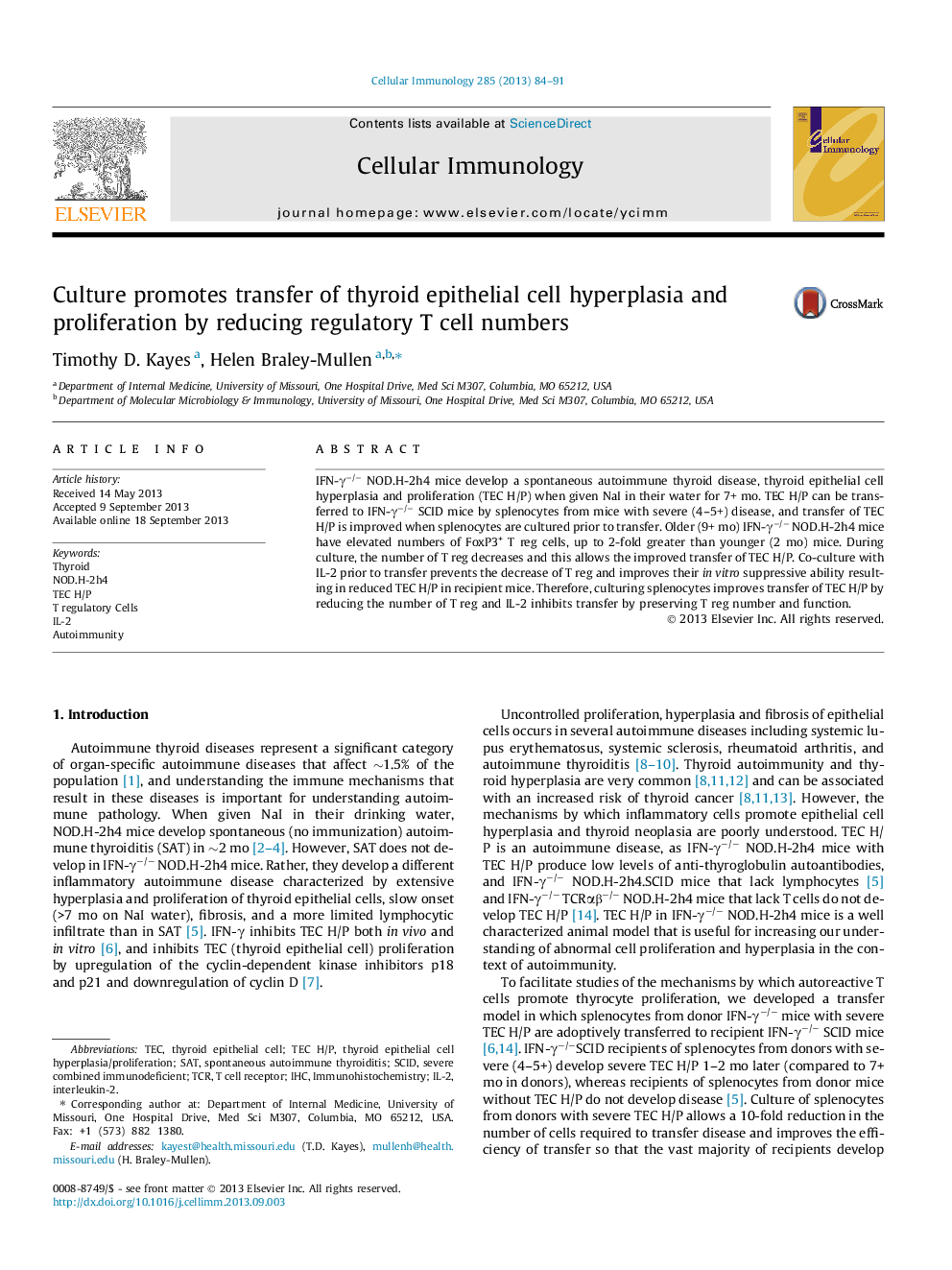| Article ID | Journal | Published Year | Pages | File Type |
|---|---|---|---|---|
| 2167176 | Cellular Immunology | 2013 | 8 Pages |
•IFN-γ−/− NOD.H-2h4 mice have elevated numbers of FoxP3+ T reg.•The T reg have in vitro and in vivo function.•Culture reduces T reg and improves transfer of TEC H/P.•Co-culture with IL-2 preserves T reg and reduces TEC H/P transfer.
IFN-γ−/− NOD.H-2h4 mice develop a spontaneous autoimmune thyroid disease, thyroid epithelial cell hyperplasia and proliferation (TEC H/P) when given NaI in their water for 7+ mo. TEC H/P can be transferred to IFN-γ−/− SCID mice by splenocytes from mice with severe (4–5+) disease, and transfer of TEC H/P is improved when splenocytes are cultured prior to transfer. Older (9+ mo) IFN-γ−/− NOD.H-2h4 mice have elevated numbers of FoxP3+ T reg cells, up to 2-fold greater than younger (2 mo) mice. During culture, the number of T reg decreases and this allows the improved transfer of TEC H/P. Co-culture with IL-2 prior to transfer prevents the decrease of T reg and improves their in vitro suppressive ability resulting in reduced TEC H/P in recipient mice. Therefore, culturing splenocytes improves transfer of TEC H/P by reducing the number of T reg and IL-2 inhibits transfer by preserving T reg number and function.
